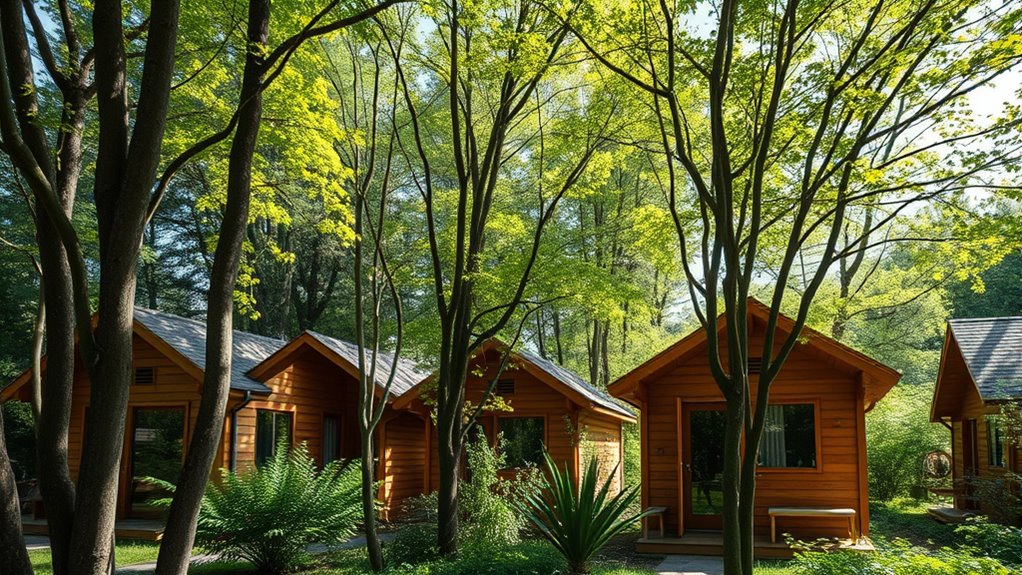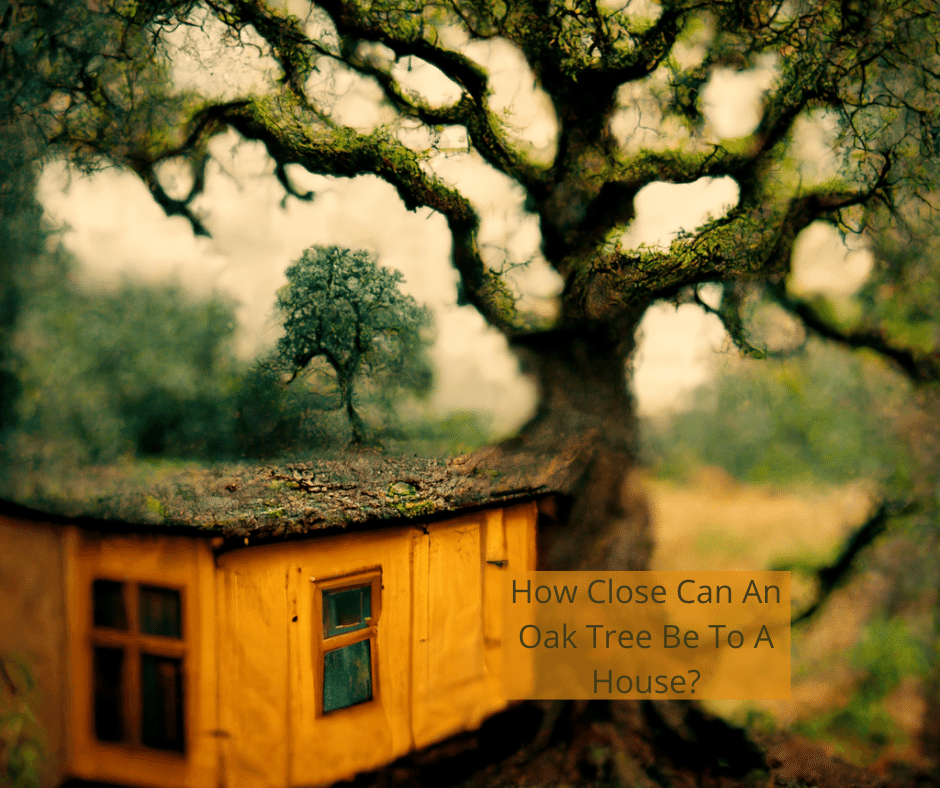Planting trees around your tiny home is a smart way to add shade, privacy, and beauty to your outdoor space. Choose native or suitable tree species, placing larger ones on the west and south sides for cooling. Fill gaps with smaller trees or shrubs to create layered coverage without overcrowding. Properly planned, trees can support local wildlife, reduce energy costs, and boost your property’s charm. Keep exploring to discover more tips for making your tiny home haven perfect.
Key Takeaways
- Select native, fast-growing trees on the west and south sides for effective afternoon shade.
- Plant trees at appropriate distances to ensure they don’t interfere with the tiny home’s structure or utilities.
- Use taller trees for privacy barriers while incorporating smaller shrubs or trees to add layers.
- Incorporate ground cover and flowering plants beneath trees to enhance aesthetics and attract wildlife.
- Plan for mature tree size to maximize shade and privacy without compromising safety or maintenance.

Planting trees around tiny homes can considerably enhance your outdoor space, providing shade, privacy, and aesthetic appeal. When you incorporate trees into your garden design, you’re creating more than just a beautiful landscape—you’re establishing a functional, inviting environment. Thoughtfully chosen trees can serve as natural barriers, shielding your home from wind and prying eyes while adding visual interest. Plus, they contribute to the overall harmony of your property, making the space feel cozy yet vibrant. Consider the layout carefully to maximize benefits; placing larger trees on the west and south sides offers afternoon shade, keeping your home cooler during hot months. Smaller trees or shrubs can fill in gaps, adding layers and depth without overwhelming your tiny space. Selecting native tree species can also ensure better adaptation and lower maintenance needs.
Beyond their immediate visual and practical benefits, trees also support local wildlife, transforming your yard into a thriving wildlife habitat. Birds, butterflies, and beneficial insects are attracted to native trees, which provide food, shelter, and nesting sites. Creating a wildlife habitat encourages biodiversity and adds lively movement to your outdoor area. Native species thrive with less maintenance and are better suited to your local climate, making them ideal choices for tiny home gardens. Incorporate flowering trees or those bearing fruit to attract pollinators and provide fresh produce, respectively. This not only benefits the environment but also offers you opportunities to enjoy nature right outside your door.
In terms of garden design, consider how your trees will integrate with existing features. You might want to plant a small cluster of trees to frame your outdoor living space or line pathways for a natural, inviting look. Think about the mature size of the trees to avoid overcrowding and ensure they won’t interfere with your tiny home’s structure or utilities. Proper planning guarantees your trees grow healthy and strong, creating a more comfortable and sustainable environment. You can also add ground cover or shrubbery beneath the trees to fill in the space, improve soil stability, and attract additional wildlife. Additionally, choosing the right tree placement can help maximize shade and reduce energy costs during the warmer months.
Planting trees around your tiny home is a smart way to boost privacy, enhance aesthetics, and support local ecosystems. With thoughtful garden design, you can create a harmonious outdoor space that feels both functional and inviting. As your trees mature, they’ll provide shade and shelter, making your tiny home more comfortable year-round. Plus, the added wildlife habitat will bring a lively, natural energy to your yard, making it a truly special place to relax and enjoy nature.
Frequently Asked Questions
What Are the Best Low-Maintenance Trees for Tiny Home Environments?
You should consider low-maintenance trees like dogwoods, redbuds, or serviceberries for your tiny home. These trees have manageable growth patterns, so they won’t overgrow your space. They also thrive in a variety of soil types, making them adaptable to different environments. Regular pruning keeps them healthy and in check, ensuring they provide shade and privacy without requiring much effort or extensive care.
How Close Should Trees Be Planted to Avoid Root Damage?
To prevent tree root interference, plant trees at a safe distance from your tiny home, following planting distance guidelines of at least half the mature tree’s root spread. This guarantees roots won’t threaten your foundation, plumbing, or utilities. Be mindful that closer planting increases root competition and damage risk. Always consider the specific species’ growth habits and root systems, and consult local guidelines for ideal spacing to protect your home and promote healthy tree growth.
Are There Any Local Regulations for Planting Trees Near Tiny Homes?
You should check your local zoning laws before planting trees near your tiny home. Many areas require planting permits, especially if trees are close to structures or property lines. Contact your city or county planning office to understand specific regulations and avoid fines. Following these rules helps guarantee your trees are planted safely, providing shade and privacy without risking damage or legal issues. Always verify local guidelines before planting.
How Do I Choose Trees That Won’t Obstruct My Tiny Home’s View?
You can select trees with a manageable height that won’t block your view, ensuring your tiny home’s sightline stays clear. Investigate the growth patterns of trees, like evergreens or dwarf varieties, that grow tall but stay narrow. By choosing trees with a mature height below your line of sight, you preserve your view while still gaining shade and privacy. Regular pruning also helps maintain your desired view and keeps your trees healthy.
What Seasonal Considerations Should I Keep in Mind When Planting?
You should consider seasonal pruning to keep your trees healthy and guarantee they don’t block your view. Adjust your watering schedule based on the season—more frequent watering in hot, dry months and less during cooler periods. Also, plant trees suited to your climate, and plan for seasonal changes like leaf drop or growth spurts. This way, you maintain shade and privacy without compromising your tiny home’s view.
Conclusion
Planting trees around your tiny home isn’t just about beauty—it’s about practicality. Did you know that strategically placed trees can reduce your cooling costs by up to 50%? Not only will you enjoy added shade and privacy, but you’ll also contribute to a healthier environment. So, consider planting a mix of evergreens and deciduous trees to maximize benefits. With a little planning, you’ll create a cozy, eco-friendly retreat that saves you money and enhances your outdoor space.








